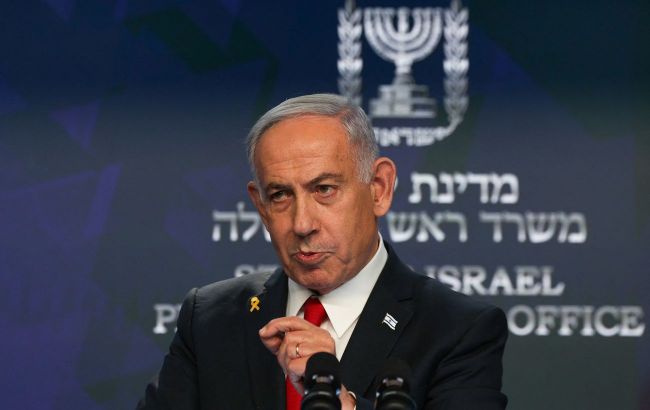Final battle looming? Why Israel intends to seize total control of Gaza
 Prime Minister of Israel Benjamin Netanyahu (Photo: Getty Images)
Prime Minister of Israel Benjamin Netanyahu (Photo: Getty Images)
Israel plans to expand its military operation to cover the entire territory of the Gaza Strip.
RBC-Ukraine explains the reasons behind this sudden move and how it may affect Israel’s international standing.
Key questions
-
Why hasn’t Israel destroyed Hamas in the Gaza Strip yet?
-
What reasons have led to serious talks about a full occupation of the enclave only now?
-
How is the world responding to Israel’s plans?
After neutralizing the threat posed by Iran and its allies, Israel has focused on addressing the problem of Hamas in the Gaza Strip. Since the end of 2023, a military operation against militants has been ongoing there, launched in response to a large-scale terrorist attack that claimed over 1,200 lives.
Despite partial prior success, Israeli Prime Minister Benjamin Netanyahu has proposed the full occupation of this enclave, which lies between Israel on one side and the Mediterranean Sea on the other. The expansion of the operation faces opposition from the General Staff as well as Israel’s Ministry of Foreign Affairs. However, according to multiple sources from Israeli media, Netanyahu has enough support from coalition partners to push his initiative forward. A final decision on this matter is expected to be made today, August 7.
Why now?
From a purely military perspective, defeating Hamas without occupying the entire territory of the Gaza Strip has been impossible, and this was clear from the very start of the military operation. However, until recently, the main restraining factor for Israel was the issue of hostages held by the militants, explained Israeli military expert David Sharp to RBC-Ukraine.
During the terrorist attack on October 7, 2023, Hamas captured over 250 people. In several rounds of negotiations, most were released in exchange for various concessions to the militants. As of August 2025, about 50 hostages remain captive, but it is believed that only 20–21 of them may still be alive. The hostage factor notably influenced the activity of the Israeli army.
"Many operations were still carried out only partially, or the military refrained from certain actions because the hostages’ lives were at risk," Sharp noted.
This approach allowed their lives to be preserved with the hope of eventually bringing them home, but not without tragedies. For example, in August last year, six hostages were found shot dead by Hamas shortly before Israeli forces arrived. This sparked protests in Israel, where relatives of the hostages blamed the government for failed negotiations.
Until recently, Israel continued attempts to secure the release of more hostages through negotiations mediated by Qatar, Egypt, and the United States. However, talks have reached a deadlock.
"There was a very serious attempt by Israel to free at least 10 more people as part of a preliminary agreement, for which Hamas was promised a 60-day ceasefire, a large amount of aid through crossing points, the release of over a thousand terrorists imprisoned in Israel, and so on. But Hamas did not get one thing: Israel was not willing to guarantee that after the hostages were freed and the agreement expired, the war would end with a guarantee that Hamas’s military wing would remain untouched," explained David Sharp.
As a result, for Israel, the only option left to free the hostages and eliminate Hamas’s influence in the Gaza Strip is to expand the military operation.
What is planned
Currently, the Israeli army controls about 70% of the Gaza Strip, mostly areas without the local population, which has relocated to humanitarian zones and regions still under militant control.
"The main strongholds of Hamas are twofold. These are the central parts of Gaza City and the so-called central refugee camps, located south of Gaza City, along with several large settlements. These, by the way, are the only two areas — Deir al-Balah and Nuseirat — that the army had not previously entered during ground operations due to concerns that hostages were being held there," explained David Sharp.

Gaza Strip. Purple – areas controlled by Israel. Red – humanitarian zones (map: United Nations Office for the Coordination of Humanitarian Affairs, UN OCHA)
According to Ynet, the military campaign to fully capture the Gaza Strip and destroy Hamas is expected to last between four and five months and involve up to five divisions of the Israel Defense Forces. However, variations in the timeline and scale are possible. Israeli media report many conflicting statements from various sources on this matter.
For example, the first phase may involve taking control of Gaza City, located in the northern part of the Strip, while simultaneously attempting to relocate the local population to the south and organizing the distribution of humanitarian aid, David Sharp told the outlet. Then, depending on the situation, Israeli control could expand over the central districts of the enclave or its southern areas.
Clearly, the final decision will be made by the Israeli leadership based on military, political, and international factors.
As the military operation expands, the Israeli army may suffer additional losses. Another argument against the expansion is that long-term control over Gaza will require significant financial costs. Moreover, the likelihood of returning hostages alive will sharply decrease.
"This is a matter of choice. Losses, of course, must be taken into account, but the fact that Hamas continues to exist is a very serious price, which, as the past 20 years have shown, costs Israel thousands of lives," David Sharp said
International reaction
A key concern for Israeli leadership is also the international response to plans for the full takeover of the Gaza Strip.
According to Axios, citing unnamed US officials, US President Donald Trump at least does not oppose the plan for a full occupation of Gaza.
European countries condemned the plans for a complete takeover of the enclave as early as May. They are worried that the expansion of the military operation could lead to new civilian casualties. At the same time, European nations support the disarmament of Hamas and the subsequent reconstruction of the enclave.
Amid the worsening humanitarian situation in Gaza, France, the United Kingdom, and more than a dozen other countries announced plans to recognize Palestine as a full-fledged state, which could weaken Israel’s position on the international stage. Additionally, some countries have proposed freezing Israel’s trade agreement with the EU.
In turn, Arab countries condemn the plans to occupy the Gaza Strip and advocate for resolving the situation with Hamas through negotiations. Moreover, according to public statements, the full takeover of the enclave would pause normalization of relations between Israel and Saudi Arabia under the Abraham Accords.
Mediators in the negotiations between Israel and Hamas — Egypt and Qatar — are pressuring Israel through the US not to implement the Gaza occupation plan and are urging Hamas to resume talks, Israeli public broadcaster Kan reports. However, the channel also cites an Israeli official who assessed Hamas’s chances of returning to the negotiating table before the plan’s approval as "almost zero."
Overall, the attempt to finally eliminate the Hamas threat near its borders in the short term means new challenges for Israel, but in the longer term, it could significantly improve security in the region.
Sources: comments from David Sharp, materials from The Times of Israel, Haaretz, Ynet, Axios, and Kan.

